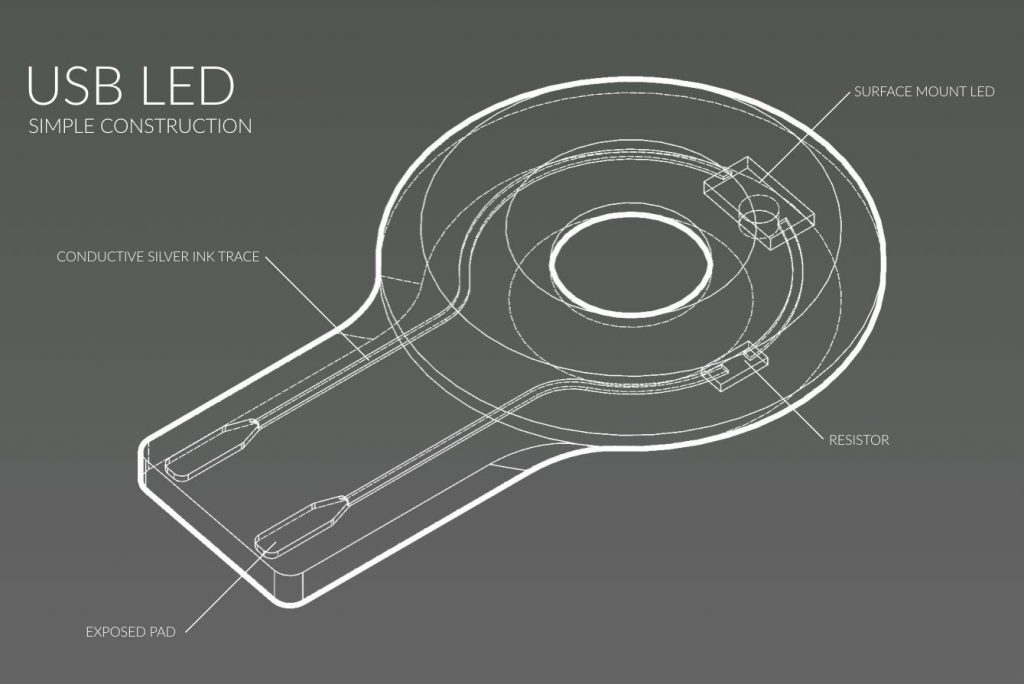No, the title isn’t a typo. Voxel8 are now offering a free sample part that showcases the unique multi-material printing capabilities of the Voxel8 Developer’s Kit 3D printer. The USB sample contains an embedded resistor and LED, both of which are printed with the Voxel8 Standard Silver Ink within minutes on desktop.
The 3D electronics sample contains a single loop circuit with an embedded surface mount LED and resistor connected in series. The ink is abrasion resistant enough to withstand multiple connection cycles without losing its conductive properties. Ordinarily priced at $20US, Voxel8 are offering one sample per order for free (excluding shipping). The demand is so high however that they cannot guarantee delivery dates.


Highly conductive silver ink

Voxel8’s first commercially available material is a highly conductive silver ink made for 3D printing electronics. The Voxel8 silver ink has a bulk electrical resistivity below 5.0×10-7 Ω-m. The ink is 20,000 times more conductive than conductive filled-thermoplastic filaments and more than 5000 times more conductive than carbon-based inks. The silver ink dries quickly at room temperature producing highly conductive electrode traces and interconnects without the need for thermal annealing. This means Voxel8’s conductive inks can be co-printed with a wide variety of thermoplastic materials.

You can get the free sample here. If you want to know more about Voxel8, check out our interview with their CEO Prof Jennifer A. Lewis.
About Voxel8
Voxel8’s core technology is based on over a decade of research from Harvard Professor Jennifer A. Lewis and her team at Harvard University (formerly at the University of Illinois). The Lewis Group has demonstrated several revolutionary advances in multi-material 3D printing, including conductive inks for printed electronics, lightweight composites, lithium ion micro-batteries, and embedded sensors in stretchable matrices. Their work was highlighted as one of the “top 10 breakthrough technologies” by the MIT Technology Review in 2014.



